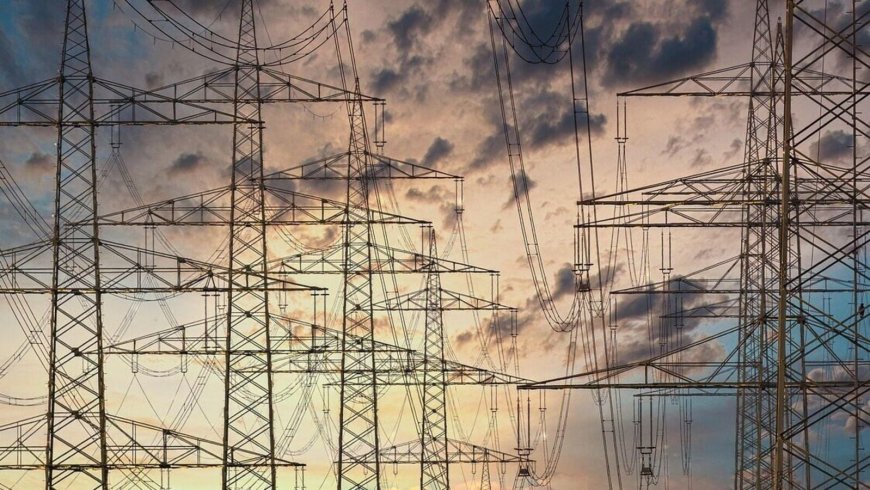Mint Explainer: Why NSE, MCX Are Powering Up with Electricity Derivatives
Explore why NSE and MCX have launched electricity derivatives, how they work, their impact on energy markets, and what they mean for investors and power sector players.

India’s Energy Markets Enter a New Era
In a significant stride towards deepening financial instruments in India’s commodity markets, the National Stock Exchange (NSE) and the Multi Commodity Exchange (MCX) have launched electricity derivatives, marking a transformative move to provide market participants a platform to hedge price risks in the power sector. This step brings India in line with global energy trading hubs and is expected to improve price discovery, boost efficiency, and offer greater transparency in electricity pricing.
The introduction of electricity derivatives comes amid rising volatility in power prices, driven by changing demand patterns, fuel price fluctuations, and the growing integration of renewables into the energy mix.
What Are Electricity Derivatives?
Electricity derivatives are financial contracts whose value is derived from the price of electricity. Unlike traditional commodities like oil or wheat, electricity cannot be stored efficiently, making its pricing extremely volatile and sensitive to real-time demand-supply dynamics.
These contracts, traded on exchanges such as NSE and MCX, allow participants—including power generators, distributors, industrial consumers, and financial institutions—to hedge against future price movements. The derivatives include monthly and daily contracts, with settlement based on electricity spot prices published by the Indian Energy Exchange (IEX).
Why Now? The Market Context
India's electricity demand hit record highs in 2024, propelled by industrial activity and a scorching summer. Simultaneously, spot market prices have seen wide fluctuations due to coal shortages and intermittent renewable energy supply.
“This is the right time to introduce power derivatives. The market is maturing, demand is growing, and volatility is high. There’s a real need for hedging tools,” said Prabhakar Patnaik, Head of Commodities at Axis Securities.
India is also committed to transitioning to a more market-oriented energy system, where prices reflect demand and supply rather than being tightly controlled. Derivatives can play a crucial role in that shift, enabling participants to plan better and reduce exposure to price shocks.
How Do These Contracts Work?
Electricity futures and other derivatives on NSE and MCX will be cash-settled, meaning no physical delivery of electricity is involved. Contracts are linked to the spot market rates discovered on IEX.
MCX is offering contracts such as:
-
Electricity Monthly Futures: Contracts for specific calendar months.
-
Electricity Weekly/Daily Futures: For shorter durations catering to short-term volatility.
Settlement will be based on the IEX’s Day-Ahead Market (DAM) index, which reflects average electricity prices discovered a day before delivery.
What Will Change for Stakeholders?
For Industrial Buyers
Power-intensive industries like steel, aluminum, and cement can use electricity derivatives to lock in prices and manage their energy costs better. Previously, these companies were exposed to sudden spikes in electricity prices, impacting profit margins.
“Volatility in power costs can severely distort budgets. Having a futures market helps bring predictability,” said Neha Vyas, Energy Analyst at CRISIL.
For Generators and DISCOMs
Electricity producers, especially those selling on the spot market, can hedge their expected prices. Distribution companies (DISCOMs), long criticized for inefficiency and financial losses, now have a tool to manage procurement risk more efficiently.
For Financial Institutions
Banks, mutual funds, and other institutions now have a new avenue for diversification. Electricity derivatives could attract speculators and arbitrageurs, boosting liquidity and improving the overall health of India’s commodity derivatives markets.
Global Experience and Learnings
Globally, electricity futures are widely used in developed markets such as the U.S. (through NYMEX), Europe (via EEX), and Australia. These markets have shown that derivatives help stabilize prices and improve investment decisions in the power sector.
However, challenges also exist. The non-storability of electricity makes these derivatives complex to model. There’s also the issue of price caps in regulated markets like India’s, which may restrict the effectiveness of free-market pricing tools.
Risks and Challenges Ahead
-
Liquidity: For these contracts to be successful, they must attract sustained volumes. Without liquidity, pricing remains inefficient.
-
Regulatory Oversight: Coordination between SEBI, CERC (Central Electricity Regulatory Commission), and exchanges is crucial to maintain fair market practices.
-
Price Volatility: While derivatives are meant to mitigate price risks, they can also amplify volatility if speculative interest dominates hedging.
Investor Outlook: Who Should Watch This Space?
Electricity derivatives are not for the faint-hearted retail investor. They require a strong understanding of the power market and price dynamics. However, for institutional investors and large corporates, this could be a game-changer.
“It’s a new asset class with significant potential. We expect growing interest as the ecosystem matures,” said Rajesh Rawat, Director of Commodities Research at ICICI Securities.
For investors seeking exposure to India’s energy sector or looking to diversify their commodity portfolio, electricity derivatives could be the next frontier.
Final Word
The NSE and MCX’s move to introduce electricity derivatives is a landmark moment in the evolution of India’s financial markets. It reflects the country’s ambitions to build a robust and market-driven energy economy. While early adoption may be slow, the long-term gains in efficiency, transparency, and risk management could be substantial.
As India charges ahead in its journey of electrification and renewable integration, financial innovation like electricity derivatives will be crucial to power its future.
What's Your Reaction?
 Like
0
Like
0
 Dislike
0
Dislike
0
 Love
0
Love
0
 Funny
0
Funny
0
 Angry
0
Angry
0
 Sad
0
Sad
0
 Wow
0
Wow
0













































































